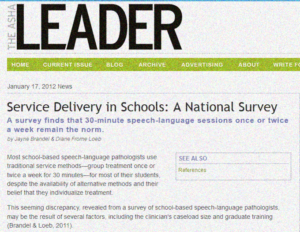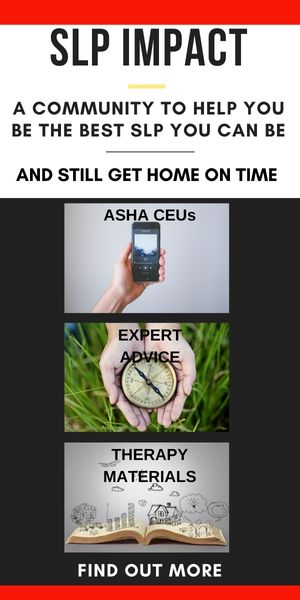As our workload increases, we need to find better practices.
The 3:1 service delivery model might be the answer.
- Caseload size (80% of SLPs ranked this as #1!)
- Student factors (e.g., severity of disability)
- Lack of time
- Increased paperwork
- IDEA mandates (e.g., Least Restrictive Environment, Alignment to Curriculum).
With the increasing demands, SLPs are searching for ways to provide effective services within an approximate 40-hour work week.

At this time, approximately 80% of students served in the schools are pulled out of the classroom to receive speech-language therapy. And, most of these students receive 30 minutes twice a week of speech-language therapy. Essentially, speech-language pathologists have approximately 30 contacts hours with students during a school year.
General education teachers, on the other hand, have access to students for 28% of their waking hours. This is equivalent to 1,260 hours annually. In turn, we need to build capacity by supporting teachers and increasing their knowledge base of speech-language strategies to make a lasting effect for students. Use of various service delivery models is one way to increase generalization of students’ communication skills, support teachers and support the goals of IDEA mandates while maintaining a manageable workload for school-based speech-language pathologists.
Classroom-based intervention wins in the research
A study conducted by Throneberg (2010) demonstrated a clear advantage for classroom-based team teaching to improve students’ curricular vocabulary knowledge. Miginty and Justice (2006) reviewed three studies (Throneburg et al., 2000; Valdez & Montgomery, 1997; Wilcox, Kouri, & Caswell, 1991) and concluded that classroom-based interventions, when compared to individual and group pull-out, support vocabulary growth.
But how do we do this?
As speech-language pathologists, we have the capability to adequately address specific interventions and support grade-level curriculum within the work day. The 3:1 model is being implemented in parts of the country to great effect.
3:1 Service Delivery Model
The 3:1 speech delivery model divides the calendar into direct intervention to students for three consecutive weeks, followed by a week of consultation. This consultation week is an opportunity to collaborate with teachers and other professionals who work with our students, learn what is their academic focuses are for that time period, and to reach out to parents.
The primary goal is to align services with curriculum and teacher objectives for better generalization of skills.

Making Life Better in the Schools: Service Delivery Models 101
Taking all of this information into account, we created an online course to give speech-language pathologists tools to increase their effectiveness in the schools and decrease overall workload. An understanding of various service delivery models can potentially increase students’ communicative success, improve relationships within educational teams and increase SLP job satisfaction.



